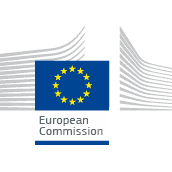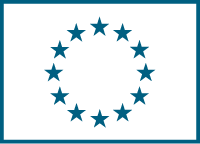
INNOVDEPLANT
Deadline: Oct 30, 2024
CALL EXPIRED
CALL EXPIRED
Entrepreneurship and SMEs
Innovation
Environment
Gender Equality
IT
Industrial Manufacturing
Research
Deployable antennas are a key element of satellites enabling them to receive and transmit data. They are relevant for all types of space applications such as navigation, Earth observation, science and defence. Technology deployed on space antennas may find applications also in the civil, terrestrial market.
A number of challenges and considerations affect current deployable antennas for space applications, hereunder the following:
- the Union’s dependency on third countries for specific materials and technologies relevant for antennas, especially large deployable antennas with a diameter at or above 5 meters. That is particularly critical as this technology is also affected by third country export restrictions that are limiting the unrestricted access of Union space industry and therefore that industry’s ability to support Union sovereignty.
- the need for the space sector to rely on space qualified technology with high level of quality, reliability, robustness, suitability to space harsh environment demonstrated by in-orbit space demonstration and validation. This approach has an important impact on the final technology cost and time to market.
Expected Outcome: The expected outcomes of this pilot project will allow EU to reduce the dependencies from non-EU countries for the critical space technologies relevant to reflectors and deployable antennas and accelerate time to market. The identification of novel non-dependent materials, techniques to re-use parts, materials from end-of-life assets and antennas for assembly and manufacturing on orbit will contribute to increase EU sovereignty and allow unrestricted access to key, critical space technologies.
The pilot project is expected to contribute to the above-mentioned challenges and considerations. This will contribute to developing, deploying global space-based services applications and data and contribute to fostering the EU's space sector competitiveness.
Scope:The areas of R&I, which needs to be addressed to tackle the above-mentioned expected outcomes are:
- the development of novel techniques and manufacturing technologies for deployable antennas. This shall include efforts in the development of low-cost (e.g. re-usable and commercial off-the-shelf) and short manufacturing-time reflector moulds that are also compatible with larger diameters, at or above 5 meters;
- the replacement of materials needed from outside the Union by developing novel materials and surfaces to ensure equivalent current performance or improved levels in terms of losses, depolarization, bandwidth, efficiency of reflector antennas. That includes paving the way for high data rate transmission by means of antennas operating in frequency bands higher to Ka-Band up to Q/V-Band as well as developing and testing novel materials for demonstrating quality and performance up to technology readiness level 4;
- the identification of methods to retrieve the useful materials or components from end-of-life antennas for reuse in the assembly or manufacturing of new hardware on orbit;
- the definition of concepts for on-orbit assembly of large antennas or re-use of antennas from end-of-life satellites on new assets and the evaluation of trade-offs of various architectures relevant for Earth Observation, Telecom. This shall include the process verification steps (e.g., with support of simulations) related to the assembly process, assuring the necessary level of quality and performance.
Proposal should address all areas.
Proposals are expected to promote cooperation between different actors (industry, SMEs and research institutions) and consider opportunities to quickly turn technological innovation into commercial use in space.
Proposals under this topic should explore synergies and be complementary to already funded actions in the context of technology development at component level as well as developments in the scope of the co-Programmed European Partnership on Globally Competitive Space Systems (‘Space Partnership’). In particular, it is expected that projects make use of existing European technologies and/or building blocks at component level contributing to European non-dependence and strengthen competitiveness. Furthermore, proposed activities should be complementary to national activities and activities funded by the European Space Agency (ESA).
In this topic the integration of the gender dimension (sex and gender analysis) in research and innovation content is not a mandatory requirement.
Public link: Only for registered users
 Pilot Projects & Preparatory Actions
Pilot Projects & Preparatory Actions
Please Log In to See This Section